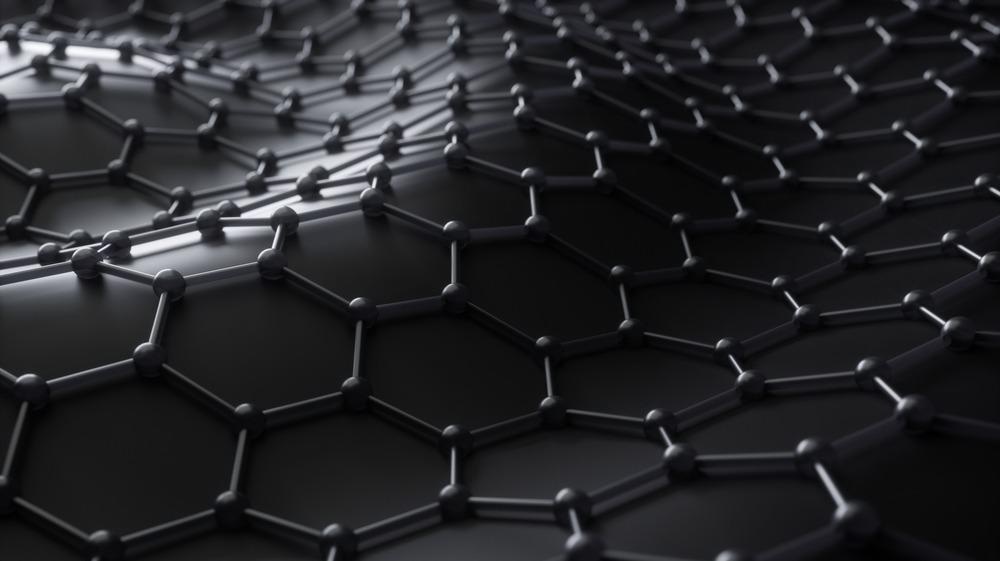The search for environmentally friendly energy storage and generation devices that can be utilized for wearable electronics has accelerated in recent years. Supercapacitors are a key technology in this search, along with batteries, and several materials have been researched for their use in supercapacitors. One of these is graphene foam, and a study published online in Energies & Fuels has demonstrated a novel supercapacitor design based on this material.

Study: Three-Dimensional ZnCo-MOF Modified Graphene Sponge: Flexible Electrode Material for Symmetric Supercapacitor. Image Credit: OliveTree/Shutterstock.com
Developing Alternative Energy Storage Devices
Developing clean, sustainable, and economical electronic energy storage devices is a key area of research in the 21st century due to the pressing need to move away from humanity’s over-reliance on fossil fuels. Aside from the carbon emissions and environmental damage caused by fossil fuels, they are a finite resource.
Batteries and supercapacitors are two of the most important candidates in this area of research. Both technologies have their advantages and disadvantages. Batteries have large volumetric energy densities, but their low power densities and temperature dependence limit their applications. On the other hand, supercapacitors are nontoxic, are cheap to maintain, and have excellent fast charge-discharge properties, but possess low energy densities.
Supercapacitors have been explored for multiple applications in sustainable energy storage devices for several industries, including for regenerative braking in hybrid electric vehicles, and for flexible, wearable devices.
Flexible All-Solid-State Supercapacitors
Current developments in wearable electronics have facilitated the need for flexible devices that can withstand significant levels of mechanical deformation and retain their electrochemical and mechanical properties. Additionally, these devices need to be lightweight, safe, cost-effective and must be able to rapidly charge and discharge any electrical current.
Flexible all-solid-state supercapacitors (FASCs) have emerged as candidates for wearable energy storage devices. The main factor that affects the performance of a supercapacitor is the electrode material. Thus far, there has been increasing research into electrode materials for FASCs, with two-dimensional materials such as MXenes, MoS2, and graphene a particular research focus.
Amongst these materials, graphene has emerged as a forerunner in FASC research. This is due to several attractive properties, such as excellent mechanical, electrical, and structural features. Its flexibility, conductivity, and structure that can be easily shaped are advantageous. Moreover, 2D paper and 3D sponge materials can be easily fabricated using graphene, endowing them with superior physical and chemical properties.
Overcoming Issues with Graphene
However, two-dimensional graphene materials tend to aggregate due to Van der Waals effects, reducing their accessible surface area. This limits their use as electrode materials due to decreased performance. To counter this, three-dimensional graphene structures are becoming increasingly favored for use as supercapacitor electrode materials. 3D materials have been widely reported to possess characteristics such as wide pore size distributions, large surface areas, and good electrical conductivity.
More from AZoM: Effect of Fast-Charging on Lithium-Ion Battery Performance
Metal-organic frameworks (MOFs,) which are highly structured crystals combining metals or metallic clusters and organic ligands, have emerged as promising candidates for supercapacitor electrodes. Advantageous properties of metal-organic frameworks include highly tunable chemical structures, enhanced porosity, high specific surface areas, and their adaptability to both nanoporous and mesoporous materials. The use of metal-organic frameworks has rapidly increased the design of FASCs.
Multiple studies have investigated the use of MOFs for FASCs, but whilst they have laid a good foundation, they have not demonstrated sufficient energy and power densities and capacitance values. Additionally, research has focused on monometallic MoFs, whereas bimetallic MoFs display enhanced mimetic activity and catalytic performance, and the fabrication of a functional 3D bimetallic-MoF/graphene sponge structured FASC can exhibit advantageous properties.
The Study
The research in the journal Energies & Fuels has demonstrated a novel ZnCo-MOF/graphene sponge composite material for use as a flexible supercapacitor electrode. A solvothermal synthesis method was used to prepare the doped structure and produce a 3D structure. This novel material was used to design a flexible and durable asymmetrical FASC circuit, which was used for both positive and negative electrodes.
The authors have stated that this is the first study where an FASC has been prepared using a 3D graphene sponge and a bimetallic MOF. Compared to monometallic MOFs, the novel ZnCo-MOF/GS circuit presented in the research exhibited long-cycle performance, high energy and power density, and superior capacitive performance. Moreover, the material’s performance under severe bending conditions was excellent.
The electrochemical behavior of this novel material was investigated using cyclic voltammetry, electrochemical impedance spectroscopy, and galvanostatic charge-discharge. Structural and morphological studies were performed using methods such as scanning electron microscopy, Raman spectrometry, and X-ray diffraction.
Results of the study demonstrated that due to its electrochemical and mechanical performance, the novel ZnCO-MOF/GS material developed by the team has vast potential for energy storage devices, in particular lightweight, flexible, wearable electronics.
Further Reading
Erçarıkcı, E et al. (2022) Three-Dimensional ZnCo-MOF Modified Graphene Sponge: Flexible Electrode Material for Symmetric Supercapacitor [online] Energy Fuels 2022 | pubs.acs.org. Available at:
Disclaimer: The views expressed here are those of the author expressed in their private capacity and do not necessarily represent the views of AZoM.com Limited T/A AZoNetwork the owner and operator of this website. This disclaimer forms part of the Terms and conditions of use of this website.